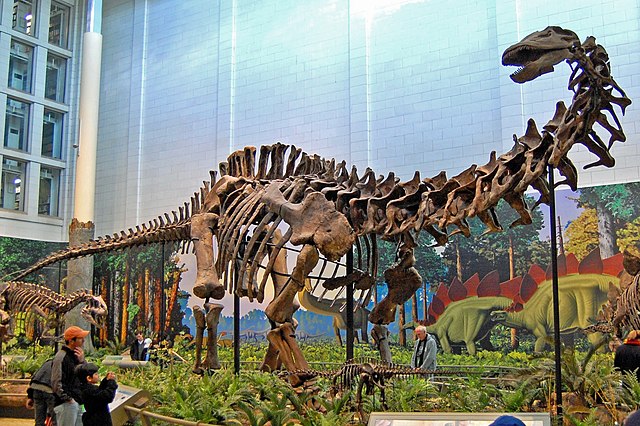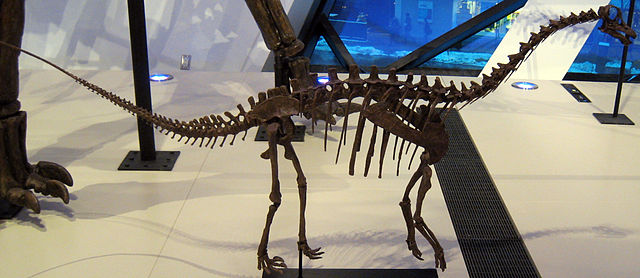Macronaria is a clade of sauropod dinosaurs. Macronarians are named after the large diameter of the nasal opening of their skull, known as the external naris, which exceeded the size of the orbit, the skull opening where the eye is located. Fossil evidence suggests that macronarian dinosaurs lived from the Middle Jurassic (Bathonian) through the Late Cretaceous (Maastrichtian). Macronarians have been found globally, including discoveries in Argentina, the United States, Portugal, China, and Tanzania. Like other sauropods, they are known to have inhabited primarily terrestrial areas, and little evidence exists to suggest that they spent much time in coastal environments. Macronarians are diagnosed through their distinct characters on their skulls, as well as appendicular and vertebral characters. Macronaria is composed of several subclades and families notably including Camarasauridae and Titanosauriformes, among several others. Titanosauriforms are particularly well known for being some of the largest terrestrial animals to ever exist.

Macronaria
Sauropoda, whose members are known as sauropods, is a clade of saurischian ('lizard-hipped') dinosaurs. Sauropods had very long necks, long tails, small heads, and four thick, pillar-like legs. They are notable for the enormous sizes attained by some species, and the group includes the largest animals to have ever lived on land. Well-known genera include Apatosaurus, Argentinosaurus,
Alamosaurus, Brachiosaurus, Camarasaurus, Diplodocus, and Mamenchisaurus.
Sauropoda
Reconstruction of Ampelosaurus
Some sauropods, such as Alamosaurus sanjuanensis, formed herds segregated by age.
Cast of Toni, a juvenile brachiosaurus (restored as a diplodocid)





